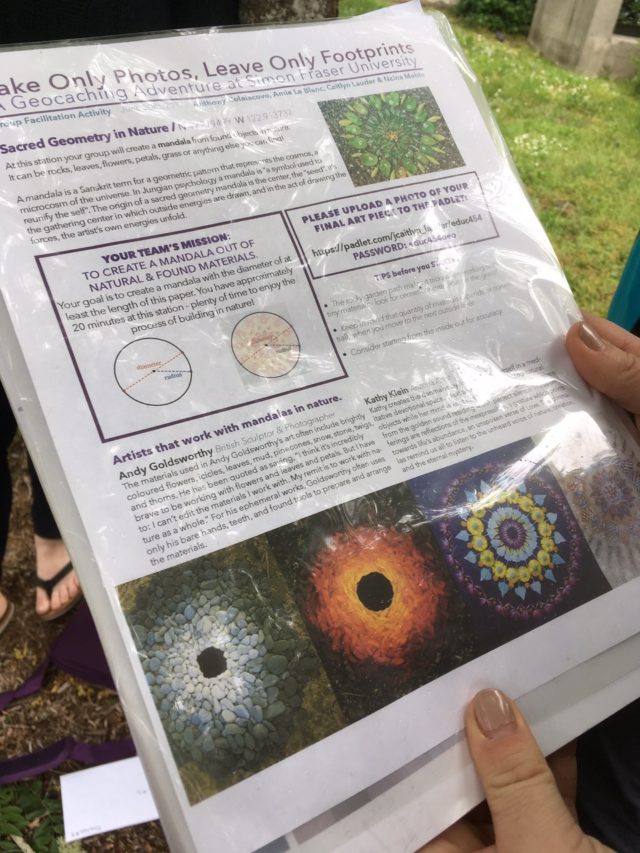Inclusive Education

Week 7 – EDUC454D100 – June 20, 2017
How do you know that you are being inclusive? Yup. Here’s the question of the week. Before writing their reflective journal, I asked students to watch Shelley Moore’s SSHRC-CRSH 3.5 minute video on Transforming Inclusive Education. I love the bowling metaphor and the 7-10 split. Are we teaching to the middle? If so, how do you know?
I am always inspired by my students. This reflection question was brought to me by my students. Some students approached me to let me know that they were a little spooked by some of the outdoor activities. Over the last few weeks, groups were facilitating interdisciplinary learning activities that involved their subject specialty, environmental education, and mathematics (aka. quantitative approaches). I can understand their concerns. Of course, I encouraged the students to come to class, but also encouraged them to let me know if they were experiencing any difficulties or wanted to opt out. It’s my job to differentiate their learning and make adaptations.
That said, the group facilitations have been exceptional in differentiating learning and “taking aim” to accommodate all learners. Even still, some were feeling excluded or intimidated. This was interesting to me. These students made some assumptions about the learning activity because of the nature of the learning activity… and “skipped the class.” Even though Shelley Moore was referencing students with developmental challenges, the truth is, we are all different and we can’t make assumptions of what people can do and cannot do. We could be aiming for the 7th pin but we may not be perfect in getting a “strike” each time we throw. Thus, to ensure that I am creating an inclusive classroom I try my best to aim for the 7th or 10th pin… but I also create a learning environment where students feel safe to express themselves and share their concerns. My job is to respond appropriately.
This week’s group facilitation did an exceptional job with their learning activity. We were GEOCACHING. We divided into new teams, we used a phone app to find 4-stations located in different locations on campus, and we engaged in learning activities that related to each of the student’s subject specialty (e.g. biology, social studies, physical education, and fine arts) and mathematics. The lesson started with how to use the geocaching app (GPS Tour) and how to participate in each activity (i.e. take pictures and downloading into Padlet as evidence of learning). The lesson ended with us gathering and calculating the distance we travelled, giving awards for best performance at each station (e.g. Timbits), and revealing the application of what we had just experienced (aka. The Travelling Salesman Problem). It was really cleaver and I appreciated that each person from this diverse leadership group found space to honour their subject specialty at each station. The activities were equally diverse, collaborative, and informative. Best of all, the facilitation was perfectly timed.
I really enjoy learning from my students and I hope that they appreciate the wonder and joy of learning and sharing what they are interested in with their peers in a collaborative and collegial way. These experiences lent itself very nicely to this week’s reading reflection on problem-based learning (but also for next week’s reading on project based learning). It’s not about freedom. This “perceived freedom” is created by me… the teacher (aka. facilitator of learning). It’s my job to create the learning environment that is conducive to collaboration, set the learning intentions and expectations so that students understand what’s expected of them, and provide guidance before, during, and after the learning activity, if needed. What I learned is, on the one hand, the learning experience is completely “controlled” (well, I would say “orchestrated”) by me, but it’s also my job to GET OUT OF THE WAY so that students can realize their creativity and interests, which enables them to find agency.






